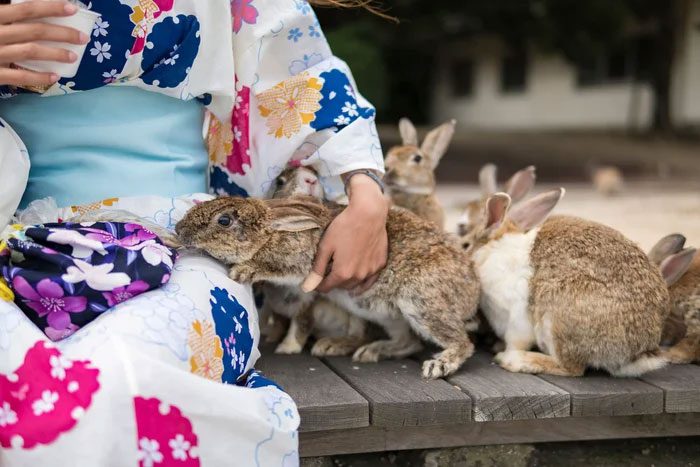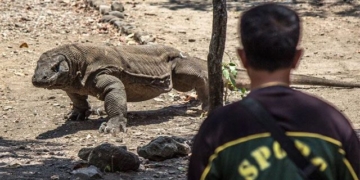The famous rabbit population on Japan’s Rabbit Island is facing a crisis due to tourists bringing too much food to the island.
Ōkunoshima, also known as “Rabbit Island,” is a popular tourist destination in Japan, attracting over 100,000 visitors each year.
Located 70 kilometers from Hiroshima, tourists flock to this island for its beaches, hot springs, and most importantly, its wild rabbits.
Home to over 900 adorable wild rabbits, the furry residents of the island are currently facing a survival crisis due to an unintentional habit of tourists.
Visitors to the island have been bringing too much food to feed the rabbits and often leave leftover food. The excess food has started attracting predators from nearby coastal areas. Due to a significant number of tourists ignoring feeding guidelines set by the city management, some rabbits have also become weak and unhealthy from being fed the wrong diet. Tourists often provide lettuce and carrots instead of the pellets, grass, and vegetables that rabbits should be fed.

Many tourists still believe that carrots or lettuce are good for rabbits and feed them incorrectly.
With an increase in wild and sometimes aggressive animals such as rats, crows, and even wild boars on the island, the vulnerable rabbit population is forced to compete with smaller species for food and larger species for survival.
According to Kevin Short, a cultural anthropology professor at Tokyo Information University, the biggest predator of the rabbits on this island is the “carrion crow,” known for being quite aggressive.
“These crows have no problem killing a young or weak rabbit, and I believe they could even swallow a newborn rabbit whole,” Short told SCMP.
“But originally, the rabbits did not come from Ōkunoshima,” Short explained. In the early 1900s, the island was home to a chemical weapons factory for the armed forces in the region.

The rabbits are the main attraction for tourists visiting this island.
The rabbits only began to appear on the island in the 1970s.
Some believe that the wild rabbits originated from a small group of 8 rabbits that some students released on the island in 1971. Others say that the ancestors of these rabbits were subjects of experiments during World War II.
If it weren’t for their undeniable cuteness and significant contribution to the local tourism industry, Short believes that the rabbits might be considered an invasive species, much like other predators, under Japanese law.





















































